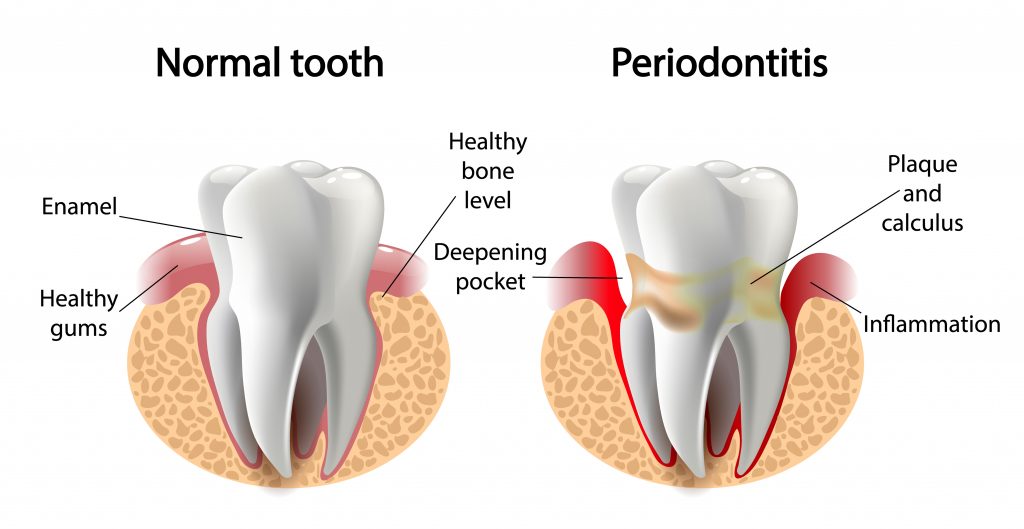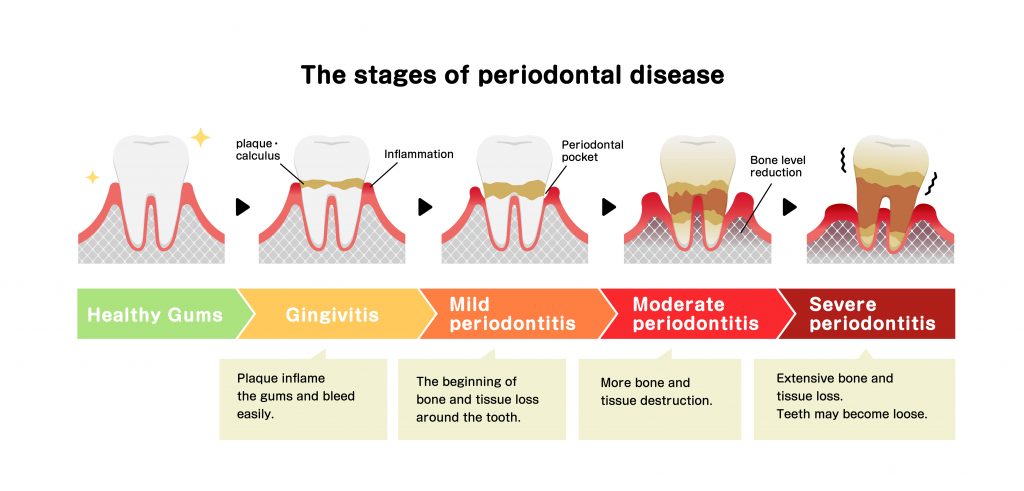Menu

Periodontal disease is diagnosed by your dentist or hygienist during a periodontal exam. This type of examination should always be a part of your routine dental appointments.
Expectant mothers are at particularly high risk and should be seen regularly. Learn more about the importance of oral health in pregnancy.
A periodontal probe is gently used to measure the sulcus (space or pocket) between your tooth and your gums. A healthy sulcus will measure 3 millimeters or less and won’t bleed. The periodontal probe shows if your pockets are deeper than they should be in order to be healthy. As periodontal disease progresses, the pockets typically get deeper.
Your dentist or hygienist will look at your pocket depths, bleeding, amount of inflammation, mobility of your teeth, and a few other criteria, to determine a diagnosis that will fall into one of the categories:
Treatment
Periodontal treatment will depend on the type and severity of your situation. Your dentist and dental hygienist will evaluate your gums for periodontal disease and discuss the appropriate treatment for you.
Maintenance
Yes, it can be as simple as brushing and flossing your teeth every day.
Once your periodontal treatment is complete your dentist and dental hygienist will recommend regular maintenance cleanings. This typically means four times a year instead of the 2 times per year you are used to. At these cleaning appointments, your pocket depths are carefully checked to ensure that they remain healthy. You will also have a full cleaning to remove any plaque and tartar that you missed during your brushing and flossing routine.
Good oral hygiene practices (that means brushing and flossing every day) and cleanings every 3 months are extremely important to maintain your dental health and keeping your periodontal disease under control.
